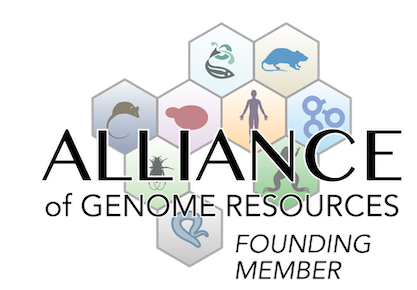endocrine/exocrine glands
|
• fetal (E13) submandibular glands (SMGs) show markedly reduced HS4C3V staining, indicating a reduction of 3-O-sulfated heparan sulfate (HS) epitopes in the basement membrane
• however, binding of the FGF10/FGFR2b complex to endogenous HS is not altered in the SMG epithelium
• moreover, adult SMGs from both sexes show no differences in weight and gross histology relative to wild-type SMGs
|
|
• isolated fetal SMG epithelia cultured in laminin-111 matrix with FGF10 in minimal media for 24 h show a significantly lower morphogenic index (number of endbuds x duct length x endbud width, in arbitrary units) than wild-type epithelia, indicating reduced FGF10-dependent epithelial morphogenesis
• intact E13 SMGs obtained from heterozygous crosses and cultured ex vivo for 48 h show a significantly lower endbud count (ratio of endbud number at 48 h / number at 1h) than wild-type SMGs, indicating reduced ex vivo branching of intact SMGs
• however, gene expression of other sulfotransferases or genes related to FGFR2b signaling and proliferation are normal
|
|
• basal salivary gland function appears to be reduced, possibly due to myoepithelial dysfunction
• however, no alterations in salivary flow or saliva protein concentration are noted after pilocarpine stimulation
|
homeostasis/metabolism
| N |
• adult SMGs show normal HS disaccharide composition and normal immunostaining with 10E4 antibody and FGF10/FGFR2b complex binding to the basement membrane HS
• overall glycosaminoglycans (GAG) composition is normal, with no detectable changes in the total levels of HS, chondroitin sulfate (CS), and hyaluronic acid (HA) in adult SMGs
|
behavior/neurological
|
• unstimulated mice show an increase in the frequency of drinking behavior in a lickometer test, suggesting basal salivary hypofunction
|
digestive/alimentary system
|
• fetal (E13) submandibular glands (SMGs) show markedly reduced HS4C3V staining, indicating a reduction of 3-O-sulfated heparan sulfate (HS) epitopes in the basement membrane
• however, binding of the FGF10/FGFR2b complex to endogenous HS is not altered in the SMG epithelium
• moreover, adult SMGs from both sexes show no differences in weight and gross histology relative to wild-type SMGs
|
|
• isolated fetal SMG epithelia cultured in laminin-111 matrix with FGF10 in minimal media for 24 h show a significantly lower morphogenic index (number of endbuds x duct length x endbud width, in arbitrary units) than wild-type epithelia, indicating reduced FGF10-dependent epithelial morphogenesis
• intact E13 SMGs obtained from heterozygous crosses and cultured ex vivo for 48 h show a significantly lower endbud count (ratio of endbud number at 48 h / number at 1h) than wild-type SMGs, indicating reduced ex vivo branching of intact SMGs
• however, gene expression of other sulfotransferases or genes related to FGFR2b signaling and proliferation are normal
|
|
• basal salivary gland function appears to be reduced, possibly due to myoepithelial dysfunction
• however, no alterations in salivary flow or saliva protein concentration are noted after pilocarpine stimulation
|



 Analysis Tools
Analysis Tools